
Triphala: What You Need To Know
When we look back at ancient medicines and natural remedies, some have stood the test of time, whereas others have not. One herbal concoction that's steeped in a rich history is Triphala. But does it still have a place in the modern world? If you've ever been curious about Triphala, you're in the right place. Read on to find out more.
As a multipurpose herbal concoction, Triphala has long been utilised in Ayurvedic medicine. But while it's steeped in a rich history, does this selection of berries still have a place in the modern day? Well, there are many that swear by it. So, with that in mind, we take a deep dive into the world of Triphala and everything you need to know. Let's check it out!
What is Triphala?
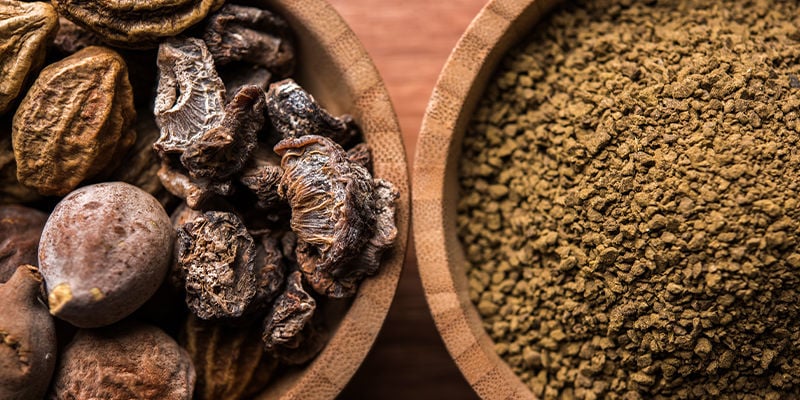
Triphala is a selection of three different berry varieties sourced from different trees native to India and Asia; each has its own unique look and host of possible benefits. This selection of berries is collected, dried, and then ground into a fine powder in equal parts. However, Triphala supplements also now exist, which offer a convenient method of enjoying everything this selection of berries has to offer.
But which three berry varieties make up the Triphala blend? Let's take a look.
Amla
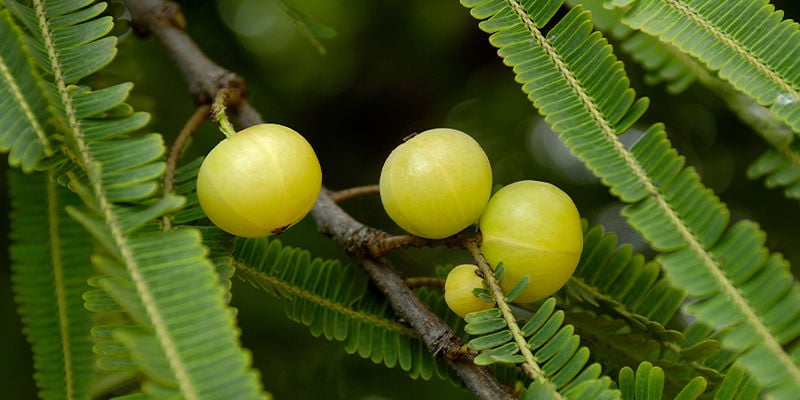
Otherwise known as the Indian gooseberry, the berries collected from the amla (Emblica officinalis) tree make up ⅓ of Triphala. These berries are teeming with various vitamins, amino acids, and minerals, making them a perfect choice for the blend. However, when consumed by themselves, the berries are characterised by their bitter and sharp flavour, making them an acquired taste for many.
Bibhitaki
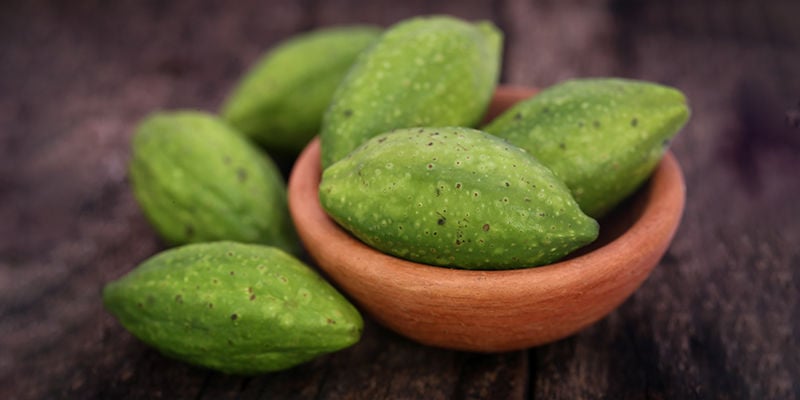
Commonly referred to as Terminalia bellirica, the berries collected from the Bibhitaki tree contain some powerful compounds that make them highly sought after. As a tree found in India and Southeast Asia, Bibhiktaki has long been used in Ayurvedic medicine and as part of traditional Chinese and Unani methods.
Haritaki
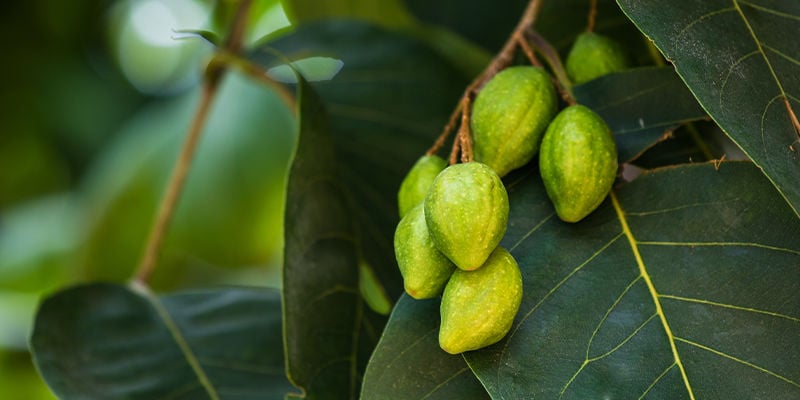
Completing the Triphala trifecta, we have haritaki. This plant (Terminalia chebula) can be found all throughout the Middle East, India, and China. Haritaki is often called the “king of medicines” due to its use in a wide range of holistic applications. With a high level of antioxidants, terpenes, and flavonoids, there are plenty of potential benefits to be had with haritaki.
What does Triphala taste like?
There are many ways to describe the flavour of Triphala. On its own, users can anticipate quite a pungent, bitter and sour taste that has moments of sweetness but is largely astringent. It's said that salt is the only flavour that isn't present in Triphala. However, while the taste might not sound too appealing on paper, there are numerous ways to soften it and make it much more palatable.
How to use Triphala powder
With a taste as we've described, it's unlikely that the prospect of shovelling a spoonful of Triphala powder into your mouth sounds appealing. So, how can you get the best out of this blend? Below, we offer some suggestions that will allow you to experience all of the possible benefits of Triphala. As a side note, taking Triphala on an empty stomach before meals is advised for maximum absorption.
While the option of taking Triphala powder straight might not sound appealing, it can absolutely be done. So if you fancy a teaspoon, go right ahead. Just prepare yourself for the intense flavour. However, you can also add some powder to foods such as salads or soups to mask the flavour a bit, but it might still be a bit overpowering for the palate.
An arguably easier method of consumption is to purchase Triphala capsules, or make your own. By adding a little powder into empty capsules and sealing them with the proper equipment, you can have a selection of ready-to-use Triphala capsules at your disposal. By measuring out the powder, you can finely tune each dose. If this option seems a little tricky, you can always opt for store-bought capsules or tablets.
Another option is to mix a spoonful of Triphala powder with a glass of water before drinking the concoction. This is a quick way of preparing and consuming, but the water is unlikely to mask the intense flavour, so you can always look to add a little sugar or even use juice to dilute the bitter taste.
Lastly, it's entirely possible to brew tea using Triphala powder. Add about half a teaspoon of powder into a cup, followed by some hot water. Stir the mixture and allow it to cool. Once ready, you can take a sip. Like the above recommendation, you can even add a little honey or sugar to make the flavour more palatable.
What are the possible benefits of Triphala?

Throughout the article, we've alluded to the potential benefits that Triphala has to offer, but just what are they? Although research into the effects of Triphala is far from extensive, there are some studies to suggest that Triphala can support well-being in a variety of different ways. Let's take a look.
First, Triphala has been studied for its antioxidant and potential anti-inflammatory properties. A study from 2014 looked to determine the “anti-arthritic effect of triphala in arthritis-induced rats”. Ultimately, the authors concluded that Triphala’s potential effects on inflammation are worthy of further study (Kalaiselvan & Rasool).
The impact of supplements on cancer is, unsurprisingly, a complicated topic. While research into Triphala's effect is in its infancy in this regard, studies have tracked the effects of the blend on the progression of tumours in mouse models of cancer, such as pancreatic, stomach, and lymphoma. However, there are no human studies to back up any claims (Sandhya et al., 2006).
Those watching their waistline may also be intrigued by Triphala for its potential effects on weight and body mass index. A human trial on 62 obese adults showed some potential promise. The volunteers given a daily dose of 10mg of Triphala experienced significant weight loss, as well as decreases in hip and waist circumference, compared to the placebo group (Kamali et al., 2012). The study authors also note that the treatment group experienced no adverse effects on liver or kidney function.
One of the first documented uses of this mix was as a natural laxative. So, is Triphala good for the gut? Studies have so far investigated the blend's potential to possibly reduce intestinal inflammation and even repair damage in this area (Nariya et al., 2009). However, more concrete evidence is needed before any conclusions can be drawn.
What are the possible side effects of Triphala?

Although seldom, some users have reported side effects associated with Triphala use. Overall, Triphala is deemed safe for consumption, but if you have any medical concerns, it's certainly worth discussing with a doctor before taking it. Pregnant and breastfeeding women should also avoid using Triphala. In terms of possible side effects, users may experience the following:
- Stomach cramps
- Diarrhoea
- Increased risk of bruising
Triphala: FAQ
- 📅 Can you take Triphala daily?
- Absolutely. This natural blend of extracts is ideal for daily consumption. Of course, if any side effects are experienced, usage should be stopped.
- 🤔 Is Triphala the same as amla?
- Not exactly. While Triphala contains amla, it's bolstered by the presence of haritaki and bibhitaki. However, some users look to add a little more amla into the mix to increase the potential benefits.
- ➕Can you take ashwagandha and Triphala together?
- Ashwagandha and Triphala can be used together. However, if you're taking any anti-diabetic medications, it's thought that this combination could impact blood sugar levels.
Is it time for Triphala?
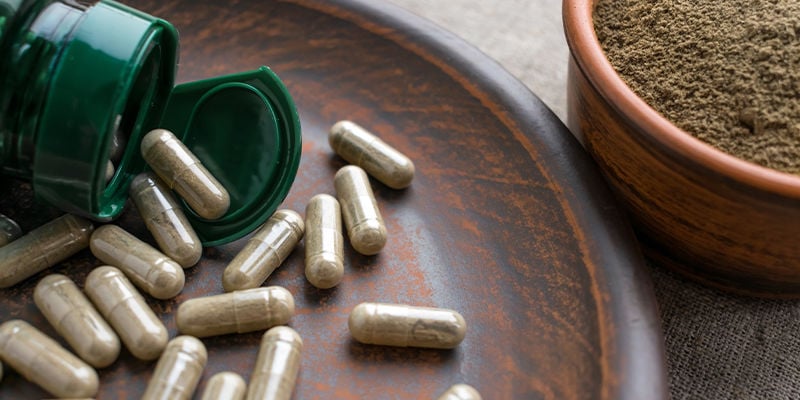
Triphala still has a valued place in the modern world. Although much more research is needed to explain all of the effects and potential benefits this mix provides, there's no denying that it has the potential to positively impact well-being. If we've piqued your interest, you can experience Triphala for yourself by heading over to the Zamnesia Healthshop and picking up some top-quality supplements.
- Kalaiselvan S, & Rasool MK. (2015 Jan). The anti-inflammatory effect of triphala in arthritic-induced rats - https://pubmed.ncbi.nlm.nih.gov
- Nariya M, Shukla V, Jain S, & Ravishankar B. (2009 Aug). Comparison of enteroprotective efficacy of triphala formulations (Indian Herbal Drug) on methotrexate-induced small intestinal damage in rats - https://pubmed.ncbi.nlm.nih.gov
- Sandhya T, Lathika KM, Pandey BN, & Mishra KP. (01/18/2006). Potential of traditional ayurvedic formulation, Triphala, as a novel anticancer drug - https://pubmed.ncbi.nlm.nih.gov
- Seyed Hamid Kamali, Ali Reza Khalaj, Shirin Hasani-Ranjbar, Mohammad Mehdi Esfehani, Mohammad Kamalinejad, Omidmalayeri Soheil, & Seyed Ali Kamali. (2012). Efficacy of ‘Itrifal Saghir’, a combination of three medicinal plants in the treatment of obesity; A randomized controlled trial - https://www.ncbi.nlm.nih.gov





 United States
United States












